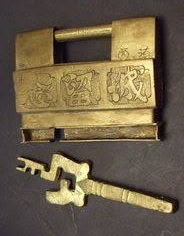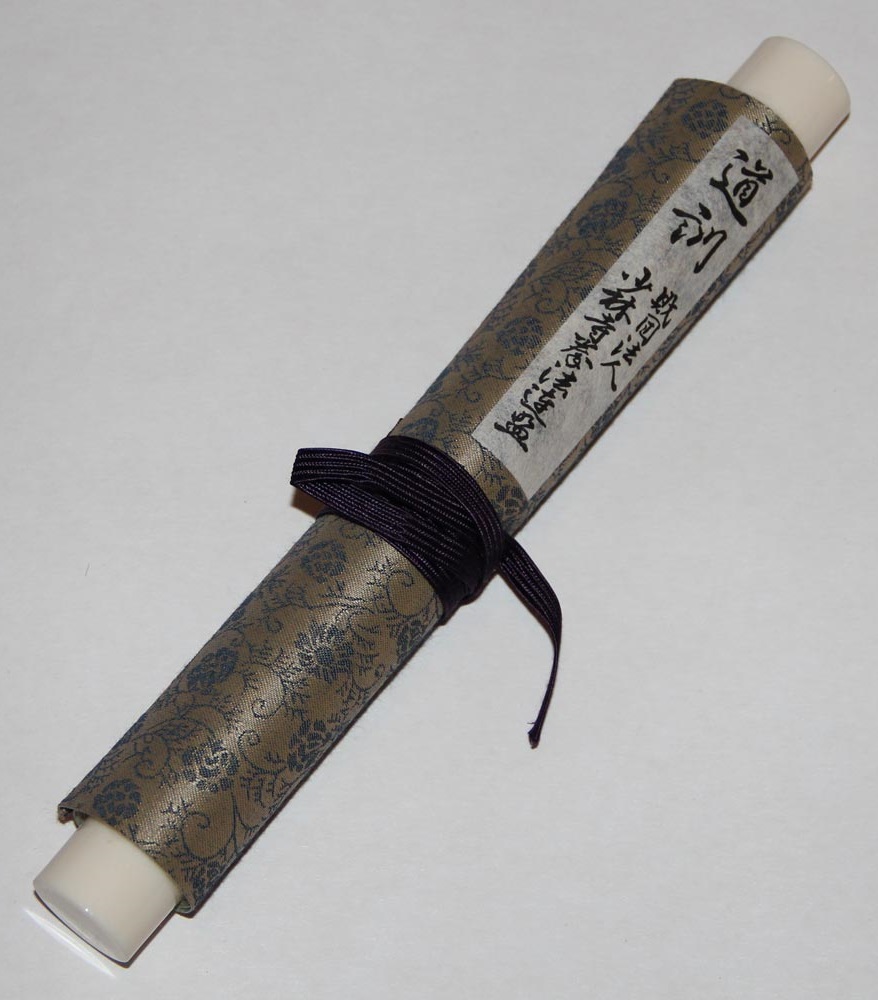Saifa Description
After bowing and announcing the name of the kata ("Saifa") ...
Yōi (cross open hands at groin level in
musubi dachi) and kiyomeri kokyū
(purification breaths)
[Kamaete is not performed in Saifa]
| 1 | Raise both hands to solar plexus level (left hand open; right hand in a tateken fist with its middle joints touching the base of the fingers of the left hand) whilst stepping 45 degrees to the right into migi zenkutsu dachi , then immediately pivot 135 degrees left, drawing the left foot into musubi dachi pulling both hands to the right hip with the left palm pressed against the right tateken | |
| 2 | Pull both hands sharply to the left hip, then step sideways with the left foot into shiko dachi as the left hand sweeps across the body and downward in shōtei-otoshi uke, followed by migi jōdan ura-ken uchi to the right side | |
| 3 | Reach forward with both hands at solar plexus level (right hand open; left hand in a tateken fist with its middle joints touching the base of the fingers of the right hand) whilst stepping 45 degrees to the right-front into hidari zenkutsu dachi , then immediately pivot 135 degrees right, drawing the right foot into musubi dachi pulling both hands to the left hip with the right palm pressed against the left tateken | |
| 4 | Pull both hands sharply to the right hip, then step sideways with the right foot into shiko dachi as the right hand sweeps across the body and downward in shōtei-otoshi uke, followed by hidari jōdan ura-ken uchi to the left side | |
| 5 | Reach forward with both hands at solar plexus level (left hand open; right hand in a tateken fist with its middle joints touching the base of the fingers of the left hand) whilst stepping 45 degrees to the left-front into migi zenkutsu dachi , then immediately pivot 135 degrees left, drawing the left foot into musubi dachi pulling both hands to the right hip with the left palm pressed against the right tateken | |
| 6 | Pull both hands sharply to the left hip, then step sideways with the left foot into shiko dachi as the left hand sweeps across the body and downward in shōtei-otoshi uke, followed by migi jōdan ura-ken uchi to the right side | |
| 7 | Looking 45 degrees to the right, side-step twice shoulder width to the left into hidari sagi-ashi dachi with migi-te ue shōtei hasami uke | |
| 8 | Migi choku geri, then (looking 45 degrees to the left) side-step twice shoulder width to the right into migi sagi-ashi dachi with hidari-te ue shōtei hasami uke | |
| 9 | Hidari choku geri, stepping back with the left foot to land in migi zenkutsu dachi whilst circling both arms outward and performing morote hikite, then chūdan heikō zuki | |
| 10 | Moving both arms in outward semi-circles migi gedan kentsui uchi striking the left palm | |
| 11 | Perform a Naha-te turn 180 degrees left into migi zenkutsu dachi with morote hikite, then chūdan heikō zuki | |
| 12 | Moving both arms in outward semi-circles hidari gedan kentsui uchi striking the right palm | |
| 13 | Use migi nami-gaeshi geri to initiate a 90 degree turn to the right into heikō dachi with migi jōdan uchi-otoshi to the right side with kiai | |
| 14 | Migi chonmage-dori, then hidari gedan ura-zuki pulling the right fist (palm down) to the right hip | |
| 15 | Hidari nami-gaeshi geri landing facing to left in heikō dachi with hidari jōdan uchi-otoshi to the left side and kiai | |
| 16 | Hidari chonmage-dori, then migi gedan ura-zuki pulling the left fist (palm down) to the left hip | |
| 17 | Turn 90 degrees left into migi zenkutsu dachi with gyaku-zuki | |
| 18 | Shift into hidari han-zenkutsu dachi, drawing the right foot forward and perform simultaneous hidari yoko uke and gyaku-zuki | |
| 19 | Slide the left foot forward and pivot 180 degrees right into migi kōkutsu dachi with migi gedan barai | |
| 20 | Shift into migi han-zenkutsu dachi, drawing the left foot forward and perform simultaneous migi yoko uke and gyaku-zuki | |
| 21 | Open the left hand into shutō uke whilst stepping forward with the left foot, then pivot 180 degrees right into neko-ashi dachi so the left hand performs shōtei uke | |
| 22 | Pull both open hands sharply to the left hip (palms facing each other), then hidari-te ue mawari uke (karami nage) |
[Zanshin yame is not performed in Saifa]
Naotte
Rei


 As
with each new kata, it is important to remind
oneself of the adage: "Manabu no tame ni hyakkkai,
jukuren no tame ni senkai, satori no tame ni manga
okonau" (学ぶのために百回、熟練のために千回、悟りのために万回行う.).
A hundred times to learn, a thousand
times for proficiency, ten thousand
repetitions for complete understanding.
A related Okinawan saying is "ichi kata san nen"
(一型三年): one kata
three years. To become truly proficient-to be able to perform it
correctly, and with the speed, power, timing, and bushi damashii (samurai spirit) necessary
to make its techniques effective in a real self-defence
situation will take a thousand repetitions, which
equates to 100 days at ten repetitions a day.
And to fully understand and apply all of its principles,
nuances, and variations will take 1,000 days (three
years) at ten repetitions per day.
As
with each new kata, it is important to remind
oneself of the adage: "Manabu no tame ni hyakkkai,
jukuren no tame ni senkai, satori no tame ni manga
okonau" (学ぶのために百回、熟練のために千回、悟りのために万回行う.).
A hundred times to learn, a thousand
times for proficiency, ten thousand
repetitions for complete understanding.
A related Okinawan saying is "ichi kata san nen"
(一型三年): one kata
three years. To become truly proficient-to be able to perform it
correctly, and with the speed, power, timing, and bushi damashii (samurai spirit) necessary
to make its techniques effective in a real self-defence
situation will take a thousand repetitions, which
equates to 100 days at ten repetitions a day.
And to fully understand and apply all of its principles,
nuances, and variations will take 1,000 days (three
years) at ten repetitions per day.